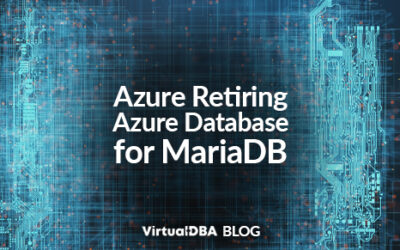In today's cloud-driven world, businesses need to move fast—but with control. Managing infrastructure manually just doesn't cut it anymore. That's where Terraform comes in. It's an open-source tool from HashiCorp that makes it easy to define, provision, and manage...
Welcome to our blog, which is more than just a record of our experiences. It’s a resource.
Our blog is an invaluable resource for anyone struggling with the challenges of managing a database, applications, or clouds.
We understand the difficulties involved in troubleshooting, building, improving, securing, and operating these platforms,
and we’re here to share our insights and expertise with you. Browse through our collection of blog posts below,
and don’t hesitate to leave your comments and feedback.
Where Is On-Premise Oracle 23ai?
Oracle Database 23ai marks a significant pivot in Oracle's product strategy, emphasizing a "Cloud-First, Developer-First" approach. This shift prioritizes cloud-native development and AI integration, leading to a notable absence of traditional on-premises releases. As...
Query Store: SQL Server’s Built-In Time Machine
Remember 2016? It was a simpler time when some of us were probably still rocking some on-prem SQL Server hardware, and Query Store had just strutted onto the scene like an eager new intern trying to make a good impression by logging every execution plan in sight....
Securing Your Data: The Critical Role of CIS Benchmarks for Database Security
In today's data-driven world, your databases are the crown jewels of your organization. They hold sensitive customer information, financial records, and proprietary intellectual property. A breach in your database security can have catastrophic consequences, leading...
Eliminate Cloud Vulnerabilities: The Critical Importance of CIS Benchmarks for AWS, Azure, and GCP
Cloud vulnerabilities have emerged alongside the cloud's revolution of business operations, bringing scalability, flexibility, and cost savings. However, this transformation introduces new security challenges. As a C-level executive, you must ensure your cloud...
Is Your IT Castle Built on Sand? How CIS Benchmarks and XTIVIA Can Help
Let's be honest: running an IT environment these days can feel a bit like trying to herd cats… wearing roller skates… in a hurricane. You’ve got cloud servers here, databases there, and maybe even some good old-fashioned on-premise gear humming along. And keeping it...
Creating and Sizing the Oracle Fast Recovery Area
When creating the fast recovery area, place it on a separate disk from the database binaries and data files. For this example, I am using the C drive because this is on a VM, which is what is available. The size of your fast recovery will also depend on several...
Azure Retiring Azure Database for MariaDB
Microsoft has announced that it is retiring Azure Database for MariaDB on September 19, 2025. Beginning on March 19, 2024, Microsoft disabled the option to create new MariaDB instances. Any that were created before this date will continue to run until the retirement...
Understanding Transparent Application Failover in Oracle Database
What is Transparent Application Failover (TAF)? TAF is a feature in Oracle that helps maintain database availability by automatically reconnecting client applications to a different database server when a failure occurs (such as a network failure or server crash) or...
Create Temporary Tablespace in Oracle and Make It the Default Temporary Tablespace
This article covers the steps to create a temporary tablespace in Oracle and make it the default temporary tablespace for the database. Step-By-Step This method works for both regular Oracle databases and multitenant databases. Each PDB and CDB has its own separate...










